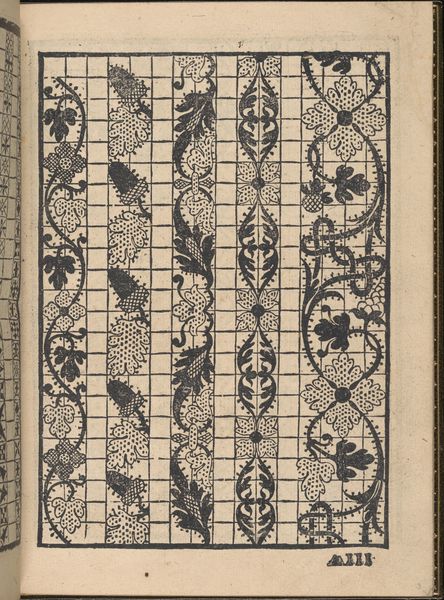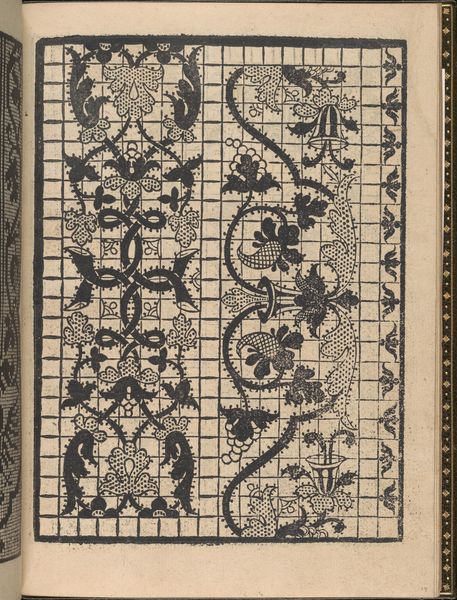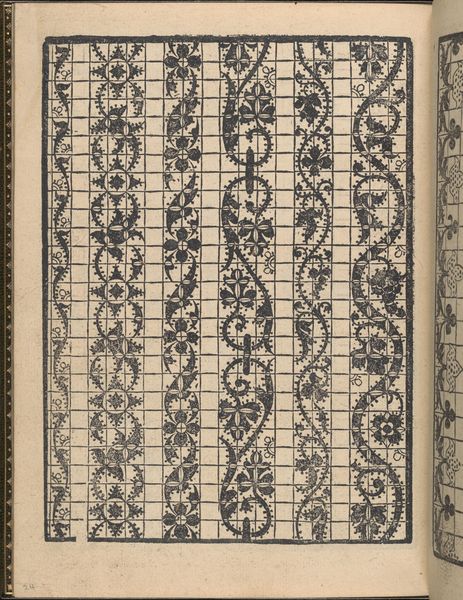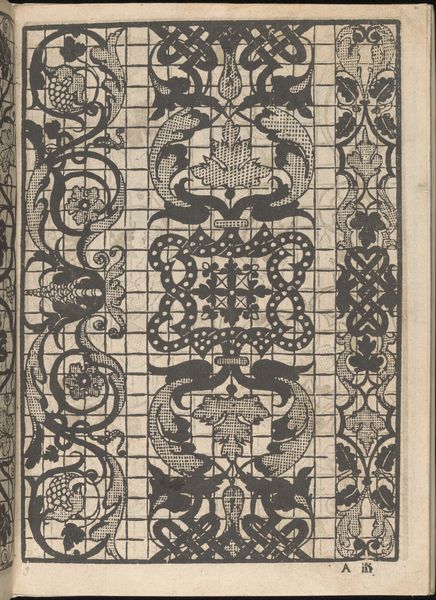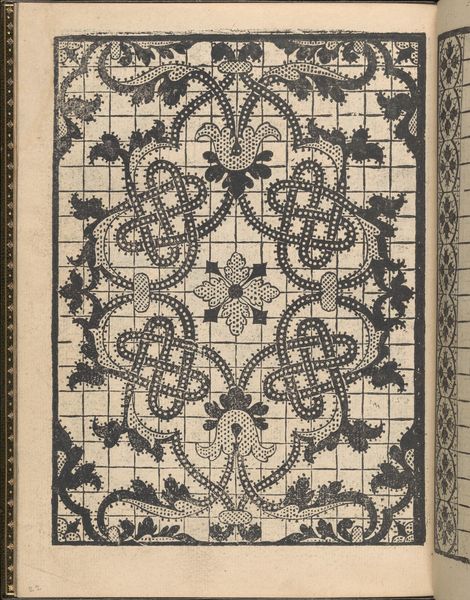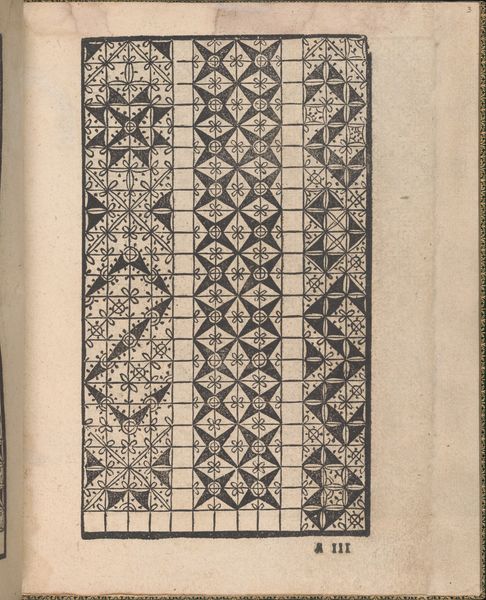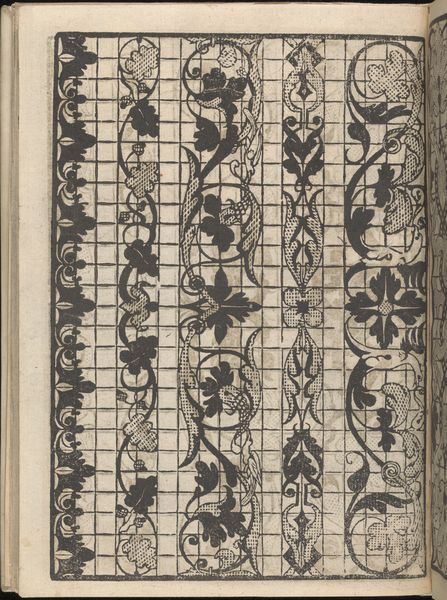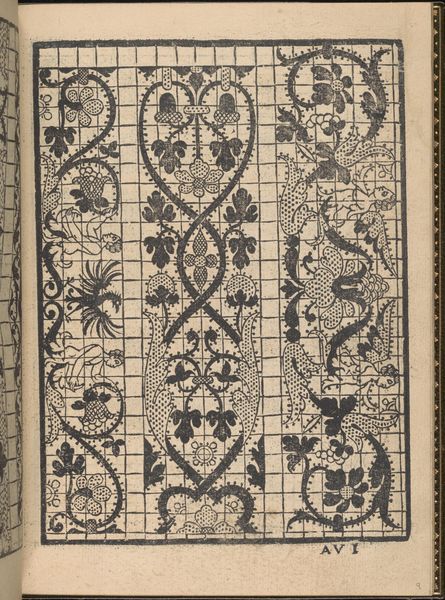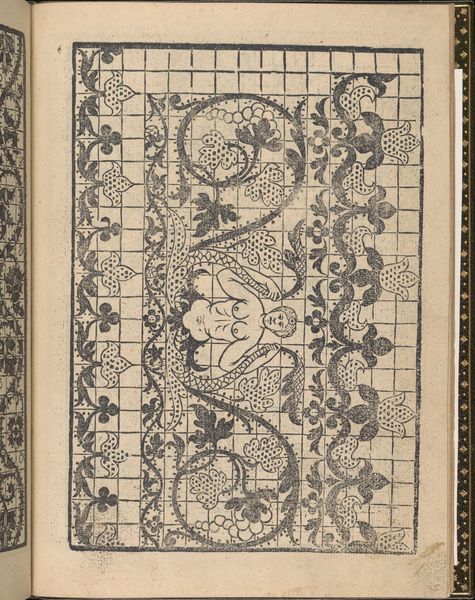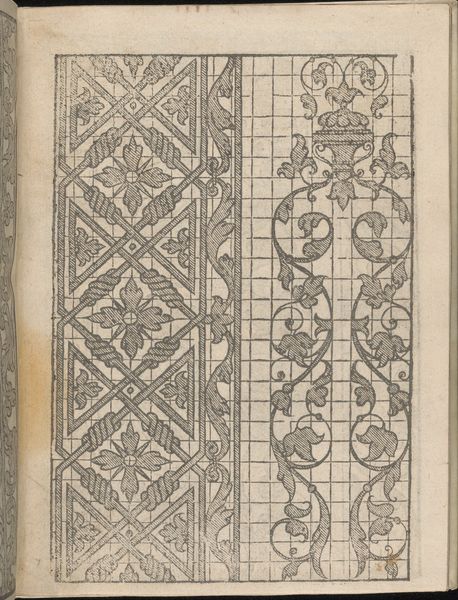
La Gloria et l'Honore di Ponti Tagliati, E Ponti in Aere, page 3 (verso) 1556
0:00
0:00
drawing, print, woodcut, engraving
#
drawing
#
pen drawing
# print
#
book
#
11_renaissance
#
personal sketchbook
#
linocut print
#
geometric
#
woodcut
#
engraving
Dimensions: Overall: 8 1/4 x 6 1/8 in. (21 x 15.5 cm)
Copyright: Public Domain
Curator: My first impression is dizzyingly gorgeous! It reminds me of a dream I had about wandering through an ancient, exquisitely patterned labyrinth. Editor: Indeed. This is "La Gloria et l'Honore di Ponti Tagliati, E Ponti in Aere, page 3 (verso)", made in 1556 by Matteo Pagano. It's currently held at the Metropolitan Museum of Art. This particular image showcases designs rendered with engravings, woodcuts, and pen drawings. It presents various geometric and floral motifs in a seemingly systematic grid. Curator: A grid! Of course. That tames the initial chaos I perceived, doesn’t it? But look at that little creature nestled within one of the patterns – it has this slightly melancholic gaze as if trapped, like the very patterns threaten to swallow its being. Am I projecting? Editor: Possibly. It’s useful to think about how design pattern books like this one circulated in 16th-century Europe. They weren’t fine art as we think of it. These were explicitly utilitarian objects intended to guide lacemakers and embroiderers. This offered new commercial possibilities and, maybe a restrictive influence on individual styles, who knows? Curator: So, the beauty isn’t the point, utility is. Does that change anything? Well, if art is really an invitation, then, these grid patterns extend an offer, a challenge: imagine this brought to life by countless artisan hands, transformed into wearable artworks! Editor: Exactly! It is through the artisan's work this page achieves significance beyond just visual appeal. Remember, the grid system allowed designs to be easily transferred and adapted, accelerating production and standardizing aesthetic principles. Curator: The Renaissance, such an embrace of the machine! In a world increasingly obsessed with originality, something is refreshingly bold to champion accessibility of form like this, in pattern and rhythm. Editor: That standardization contributed to new levels of both visual coherence and, perhaps, social control in dress and decoration across society. The story behind the image reveals an economic structure wherein creation, utility, and value converge and occasionally clash. Curator: What an exquisite balance to witness centuries later! Each carefully inscribed line whispering tales of artistry and intention... Editor: Leaving us to appreciate both the freedom and the frameworks defining our perspectives on craft and aesthetics, then and now.
Comments
No comments
Be the first to comment and join the conversation on the ultimate creative platform.
